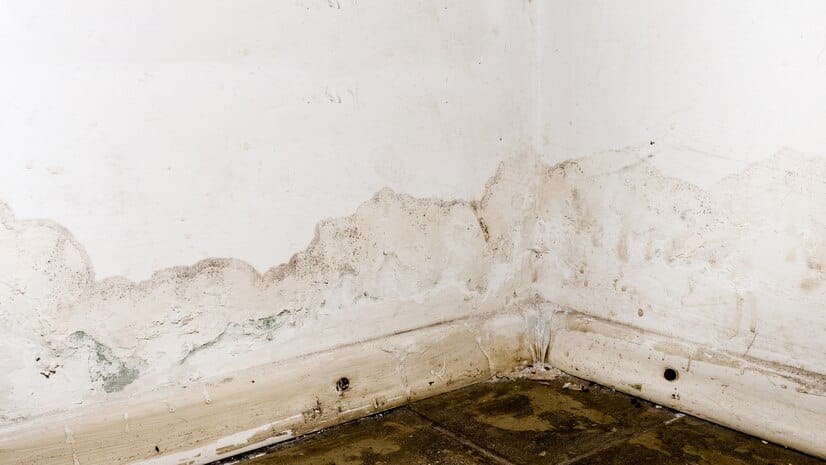
Mold growth can be a persistent issue in residential and commercial properties, causing health risks and structural damage if left unchecked. As experts in remodeling and general contracting services in Virginia, Maryland, and Washington DC, we recognize the importance of understanding and addressing mold-related problems in a comprehensive manner. As we move into the year 2024, it’s essential for property owners to gain valuable insights into effective mold remediation and develop strategies to prevent future occurrences.
In this article, we will discuss the process of mold remediation, focusing on key steps, including identifying and addressing moisture sources, proper containment and removal, cleaning and sanitizing affected areas, and preventive measures to avoid future mold growth. By following these best practices and employing professional assistance, you can maintain a mold-free environment, protect the health of your property and its occupants, and preserve your property’s value over time.
Mold remediation will not only ensure the longevity of your investment but also contribute to a healthier indoor environment for your family, employees, and customers. Combining our expertise in general contracting with an in-depth understanding of mold remediation and prevention strategies, we can help you tackle mold-related issues and maintain immaculate, healthy spaces in Virginia, Maryland, and Washington DC.
Identifying and Addressing Moisture Sources: The First Step in Mold Remediation
The key to successful mold remediation is addressing the root cause – excess moisture. Identifying and tackling moisture sources in your property ensures that mold growth will not recur after remediation. Take the following steps to locate and resolve moisture problems:
- Inspect Potential Problem Areas: Examine areas prone to high humidity or water damage, such as bathrooms, basements, kitchens, and attics, to uncover potential sources of moisture.
- Check for Leaks: Investigate your property’s plumbing, roofing, and HVAC systems to detect any leaks or damage that could contribute to mold growth.
- Monitor Humidity Levels: Maintain indoor relative humidity between 30% and 60% to discourage mold growth. Utilize dehumidifiers and proper ventilation in high-humidity spaces.
- Address Water Damage Promptly: Timely intervention for water damage incidents, such as flooding or burst pipes, can minimize the risk of mold growth.
By addressing moisture sources early on, you can create a solid foundation for effective mold remediation and prevent future occurrences.
Proper Containment and Removal: Eliminating Mold Safely and Effectively
Once moisture problems have been addressed, the next step in mold remediation is safely containing and removing the mold from your property. Containment is vital to prevent mold spores from spreading to other areas during the remediation process. Follow these guidelines to ensure safe and effective mold removal:
- Isolate Affected Areas: Seal off affected rooms or areas using plastic sheeting and adhesive tape to prevent mold spores from spreading during remediation.
- Utilize Personal Protection Equipment (PPE): Wear appropriate PPE, such as gloves, goggles, and face masks, to protect yourself while handling mold-contaminated materials.
- Remove Contaminated Materials: Safely dispose of porous or damaged materials, such as drywall, insulation, and carpeting, that harbor mold growth.
- Consult Professionals: For extensive or hazardous mold infestations, enlist the help of a professional mold remediation company to ensure effective and safe mold removal.
Proper containment and removal prevent cross-contamination and reduce the likelihood of mold recurrence in your property.
Cleaning and Sanitizing Affected Areas: Restoring a Mold-Free Environment
After addressing moisture issues and removing mold-contaminated materials, the next step is to thoroughly clean and sanitize affected areas to restore a mold-free environment. Consider the following best practices during the cleaning and sanitizing phase:
- HEPA Vacuuming: Use a vacuum equipped with a high-efficiency particulate air (HEPA) filter to remove leftover mold spores and dust from surfaces and surrounding areas.
- Cleaning Non-porous Surfaces: Scrub non-porous surfaces, such as metal or glass, with a stiff brush and a detergent solution to remove mold growth.
- Sanitizing Surfaces: Apply an appropriate antimicrobial solution or mold inhibitor to sanitized surfaces to deter future mold growth.
- Proper Frying: Ensure all cleaned and sanitized areas are thoroughly dried to eliminate lingering moisture, which can contribute to mold growth.
By meticulously cleaning and sanitizing affected areas, you can restore the health and safety of your property, protecting its occupants from mold-related health risks.
Preventive Measures: Protecting Your Property from Future Mold Growth
The final and crucial step in mold remediation is implementing preventive measures to avoid future mold occurrences. By adopting these strategies, you can maintain a healthy indoor environment and safeguard your property:
- Ventilation: Ensure proper ventilation in high-humidity areas, such as bathrooms and kitchens, and use exhaust fans to reduce moisture buildup.
- Moisture Control: Regularly inspect and maintain appliances, plumbing systems, and roofing to avoid leaks and water damage.
- Humidity Monitoring: Use humidity sensors and maintain ideal humidity levels throughout your property to discourage mold growth.
- Routine Maintenance: Perform regular property assessments and maintenance to detect and address potential mold-causing issues early on.
Integrating these preventive measures into your property management routine ensures a resilient and mold-free environment, preserving the wellbeing and value of your property.
Conclusion
Effective mold remediation is crucial in maintaining a healthy and safe environment in residential and commercial properties. By identifying and addressing moisture sources, implementing proper containment and removal practices, thoroughly cleaning and sanitizing affected areas, and adopting preventive measures, you can eliminate mold-related problems and protect your property in Virginia, Maryland, and Washington DC.
Are you in need of comprehensive mold remediation services in Fairfax, VA? Look no further than TSP Contracting! Our team of experts is dedicated to providing top-notch mold remediation services that help you maintain a healthy property. With our expert knowledge and experience, we can help you identify and eliminate mold growth, ensuring that your property is safe and healthy for you and your loved ones. Contact us today to learn more about our mold remediation services in Fairfax, VA, and discover how we can help you maintain a healthy property.